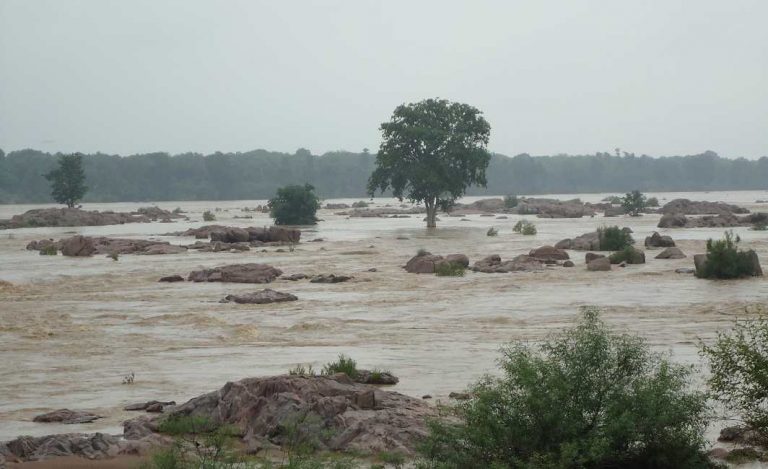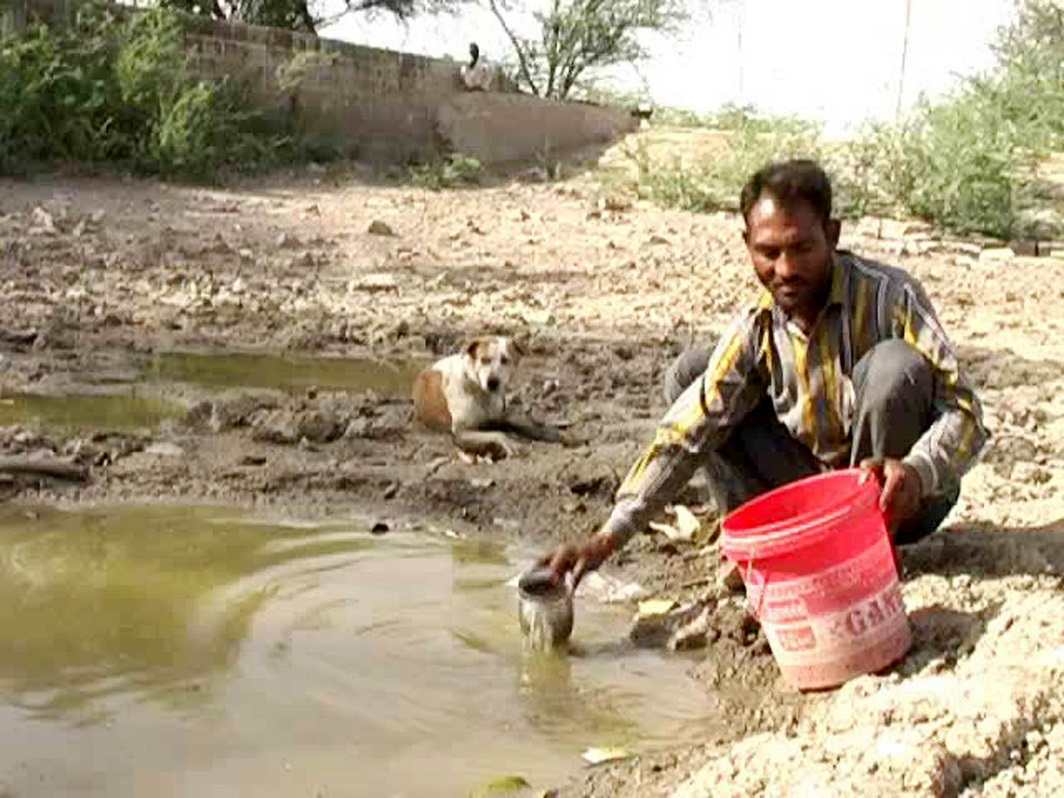
Though this ambitious riverine project in Bundelkhand is the first in a grand plan to solve many of India’s water problems, environmentalists are up in arms over its deleterious effects
~By Rakesh Dixit in Bhopal
India’s first river-linking project, which is already one-and-a-half years behind schedule, is awaiting a Supreme Court-appointed Central Empowered Committee’s (CEC) nod to get started. The Rs 18,000-cr Ken-Betwa project in Bundelkhand region cleared the last environmental hurdle in April this year when the Forest Advisory Committee (FAC) of the Union environment ministry okayed it. The clearance followed after Water Resources Minister Uma Bharti wrote to Environment and Forest Minister Anil Dave. Both hail from Madhya Pradesh which is one of the beneficiaries of the project; the other being Uttar Pradesh.
However, there are many lacunae in this project. Environmentalists and social activists say that the Ken river, a major one in Bundelkhand, is not water surplus. Also, the river flows 60 to 70 feet lower than Betwa river and at least 30 percent of the 78 MW that would be generated by the proposed hydro project would be used for pumping the water up. The tiger lobby is also opposing the project because it will submerge around 100 sq km of the Panna Tiger Reserve to build the Daudhan Dam. This includes around 50 sq km of critical tiger habitat, 10 percent of the Reserve. This project will also affect 10 villages in MP with 1,585 families as some 9,000 hectares will be submerged.
The FAC, in fact, had constituted an expert committee comprising of members from the environment and water resources ministry, National Tiger Conservation Authority and Bombay Natural History Society to suggest ways to compensate for the loss of forest cover due to this project.
Ken-Betwa is Uma Bharti’s dream project. Having worked to get all other hurdles in this project removed, she said that as soon as the Supreme Court’s panel gave its go-ahead, work would begin to quench the thirst of parched Bundelkhand, one of the most backward and drought-prone regions in India.
Ken-Betwa is Uma Bharti’s dream project. Having worked to get all other hurdles in this project removed, she said that as soon as the Supreme Court’s panel gave its go-ahead, work would begin to quench the thirst of parched Bundelkhand, one of the most backward and drought-prone regions in India.
She also hopes to reap a political harvest from this project as assembly elections are due in MP next year. Of the 230 seats, 36 fall in this region. So high are the stakes that Bharti had even threatened to sit on an indefinite hunger strike last year if the environmental hurdles in this project were not cleared soon. “I am eagerly awaiting the CEC clearance and I am confident this will come very soon,” Bharti told the press in Dindori, MP, on April 29.
The project was first mooted in the early 1980s but was actively taken up by the previous NDA government under then Prime Minister Atal Bihari Vajpayee. It was challenged in the Supreme Court, which finally gave the nod on February 27, 2012. The Court asked the then UPA government to start the process but a stalemate ensued. The Group of Ministers on the river interlinking issue did not meet even once. The NDA government under Narendra Modi revived the project and allotted Rs 100 cr in September 2014 for it. It was scheduled to start from December 2015 but environmentalists protested that the project would cause serious ecological harm to the Panna Tiger Reserve, including critical tiger habitat which is considered central to the survival of the species in the region.

In view of these objections, the Supreme Court constituted a CEC “to examine adequacy of mitigative measures against its adverse impact on the ecological integrity of the Panna Tiger Reserve and particularly the riverine eco-system”. It wrote a letter to the environment ministry on December 2, 2016, following which relevant papers and reports were made available to the panel. On December 30, the Environment Ministry’s Expert Appraisal Committee for river valley and hydel projects recommended the project for clearance. This came in April this year.
Also, the investment clearance committee, comprising of officials from NITI Aayog and the water resources ministry gave its go-ahead. The project was also cleared by the National Board for Wildlife last August. Incidentally, the project comes under the Accelerated Irrigation Benefit Program-me where the centre contributes 60 percent of the funds and the rest is given by the state. However, the water resources ministry has asked NITI Aayog to change the funding pattern to 90:10 ratio given that it is a national project.
This ambitious project will cost Rs 18,000 cr and the first phase alone, Rs 9,393 cr. This phase is likely to be completed in nine years and envisages surplus water transfer from Ken river to the Betwa basin through a 221-km canal. It will provide irrigation to 6,35,661 hectares (6,356.61 sq km). Of this, 3.69 lakh hectares (3,690 sq km) will be covered in Chattarpur, Tikamgarh and Panna districts. The remaining 2.65 lakh hectares (2,650 sq km) falls in Uttar Pradesh’s Mahoba, Banda and Jhansi districts. The project will also provide drinking water facility to 13.42 lakh people in both states.
It was in December 2015 that the Madhya Pradesh Wildlife Board had cleared this project despite protests from two members. As chairman of the Board, Chief Minister Shivraj Singh Chouhan announced approval of the project, even though wildlife expert and former secretary of the forest department, MK Ranjitsinh protested, saying the decision was being forced upon the Board. Another member, Belinda Wright, remarked at the meeting: “It is sad day for Panna Tiger Reserve.”
Ken-Betwa project will cost Rs 18,000 cr and the first phase alone, Rs 9,393 cr. This phase is likely to be completed in nine years and envisages surplus water transfer from Ken river to the Betwa basin through a 221-km canal. It will provide irrigation to 6,35,661 hectares (6,356.61 sq km).
Ranjitsinh, who helped shape India’s wildlife conservation policies for the last five decades, maintains that the river-linking project will end up destroying the wildlife sanctuaries that he and others like him have been trying to protect.
Incidentally, the Ken-Betwa project is the first in a grand plan envisaged since 1980 to solve many of India’s problems—making water available for irrigating 35 million hectares (3,50,000), enabling full use of existing irrigation projects and generating power to the tune of 34,000 MW with added benefits, including flood control. In 1980, the ministry of irrigation formulated a national plan for optimum utilisation of water resources. Two years later, the National Water Development Agency was entrusted with the task of carrying out water balance and feasibility studies of the river linking programme.
The real push for this project took place under the Vajpayee government, which planned to connect 14 Himalayan and 16 peninsular rivers by 30 canals and 3,000 reservoirs to irrigate 87 million hectares of land and produce 34 gigawatt of hydroelectricity. And it was in 2005 that an MoU was signed between the centre and MP and UP to start work on the Ken-Betwa project.
Only time will tell if this ambitious project comes to fruition.

